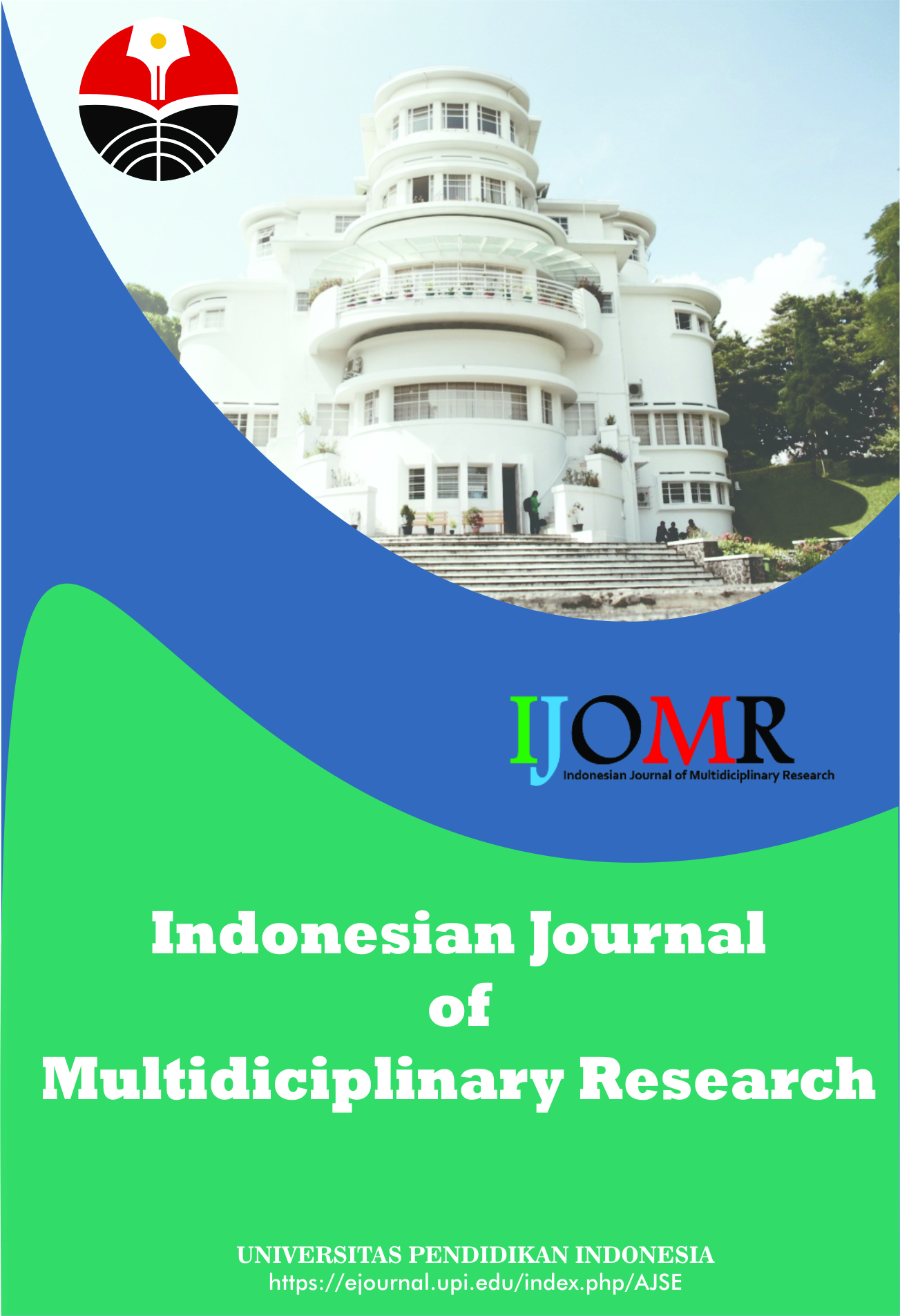Effect of Rice Husks and Wood Grain as Electrolyte Adsorbers on Battery
Abstract
The purpose of this study was to find out the carbon influence of rice husks and wood grain as electrolyte absorbers on large voltage and battery life. The battery fabrication procedure is as follows: (1) Preparing sixteen used batteries with a 1.5 Volt voltage, (2) Making NaCl solution with percentages of 10; 20; 30; and 40%, (3) Drying rice husks and wood grain until drying, (4) Carbonizing rice husks and wood grain, (5) Smoothing rice husks and carbonated wood grain, (6) Mixing rice husk, wood grain, and electrolyte solution, (7) Remove the contents of the used battery and wash it thoroughly, (8) Insert carbon from rice husks and wood grain. (9) Perform the process of closing the battery with the battery cover, (10) Measuring the battery voltage using an avometer. This research shows that carbon derived from rice husks and wood grain can generate electrical voltage, but the resulting voltage is still low compared to commercial batteries. In addition, batteries with electrolyte solutions that have a salt percentage of 10% provide the most voltage.
Keywords
Full Text:
PDFReferences
Cao, W., Zhang, E., Wang, J., Liu, Z., Ge, J., Yu, X., ... and Lu, B. (2019). Potato derived biomass porous carbon as anode for potassium ion batteries. Electrochimica Acta, 293, 364-370.
Ernawati, D., Arifudin, M., and Husodo, S. (2019). Baterai Ramah Lingkungan dari Limbah Serbuk Kayu Merbau (Intsia bijuga) dan Matoa (Pometia sp.) (Eco-friendly battery from Merbau (Intsia bijuga) and Matoa (Pometia sp .) wood grain). J Ilmu Teknol Kayu Trop, 17(1), 83-89.
Farandy, G., Suwandi, S., and Fitriyanti, N. (2021). Pengaruh konsentrasi dan temperatur terhadap daya dan tegangan keluaran listrik pada baterai air garam dengan metode sel elektrokimia. eProceedings of Engineering, 7(3).
Han, S. W., Jung, D. W., Jeong, J. H., and Oh, E. S. (2014). Effect of pyrolysis temperature on carbon obtained from green tea biomass for superior lithiumion battery anodes. Chemical Engineering Journal, 254, 597-604.
Jamilatun, S., Shakti, D., and Ferdiant, F. (2010). Pembuatan biocoal sebagai bahan bakar alternatif dari batubara dengan campuran arang serbuk gergaji kayu jati, glugu dan sekam padi. UPN Veteran Yogyakarta: Institutional Repository.
Jiang, Q., Zhang, Z., Yin, S., Guo, Z., Wang, S., and Feng, C. (2016). Biomass carbon micro/nano-structures derived from ramie fibers and corn cobs as anode materials for lithium-ion and sodium-ion batteries. Applied Surface Science, 379, 73-82.
Muhlisin, Muh., et al. (2015). Pemanfaatan sampah kulit pisang dan kulit durian sebagai bahan alternatif pengganti pasta batu baterai. Jurnal Rekayasa dan Teknologi Elektro, 9(3), 137–47.
Yuliza, N., Nazir, N. and Djalal, M. (2013). Pengaruh komposisi arang sekam padi dan arang kulit biji jarak pagar terhadap mutu briket arang. Jurnal Litbang Industri, 3(1), 21.
DOI: https://doi.org/10.17509/ijomr.v1i1.33778
Refbacks
- There are currently no refbacks.
Copyright (c) 1970 Kantor Jurnal dan Publikasi, Universitas Pendidikan Indonesia (UPI)

This work is licensed under a Creative Commons Attribution-ShareAlike 4.0 International License.
Indonesian Journal of Multidiciplinary Research (IJOMR) is published by Universitas Pendidikan Indonesia (UPI)















